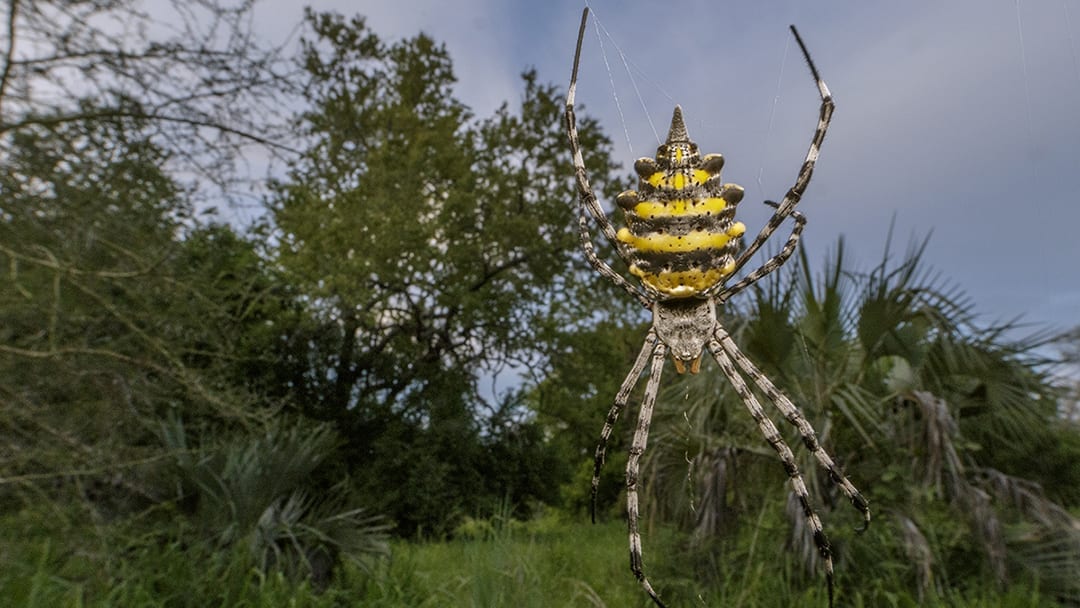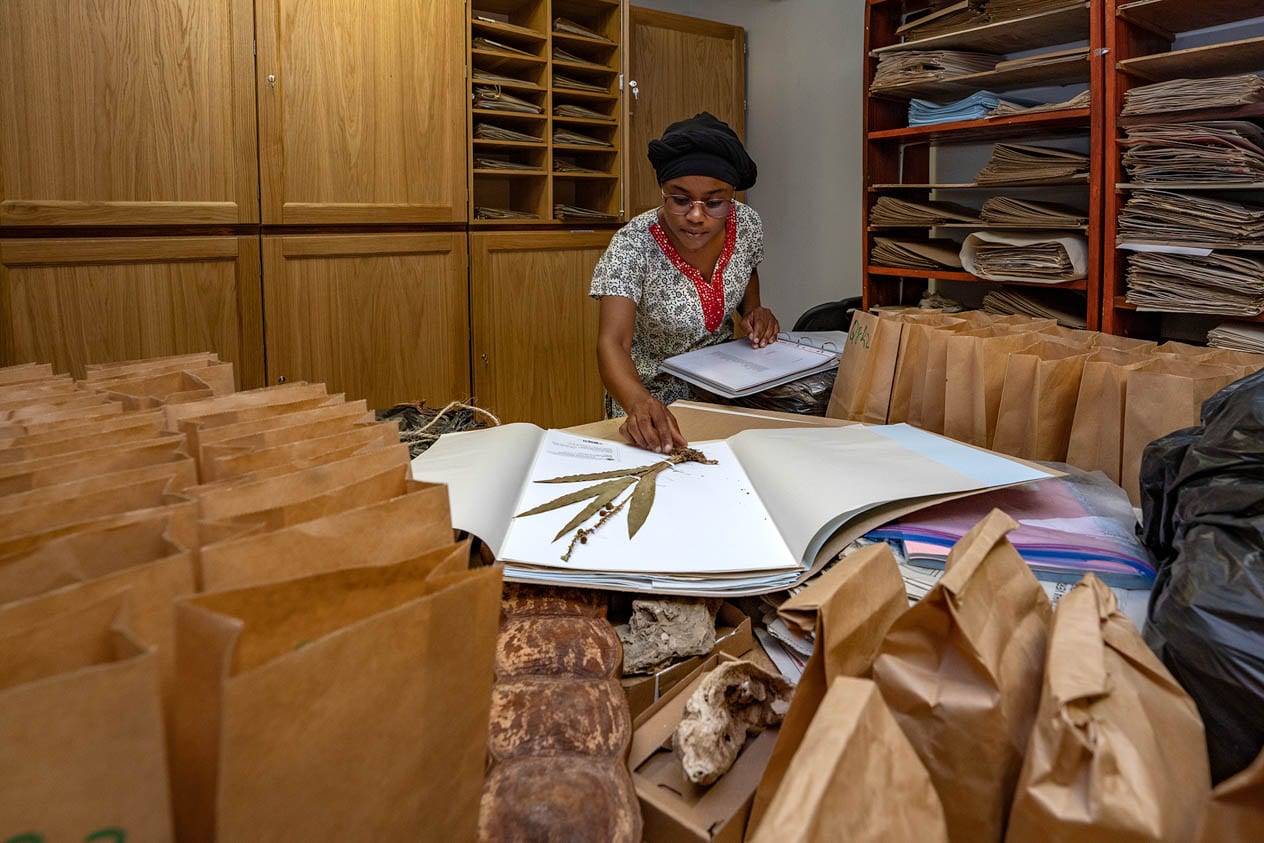Science at Gorongosa
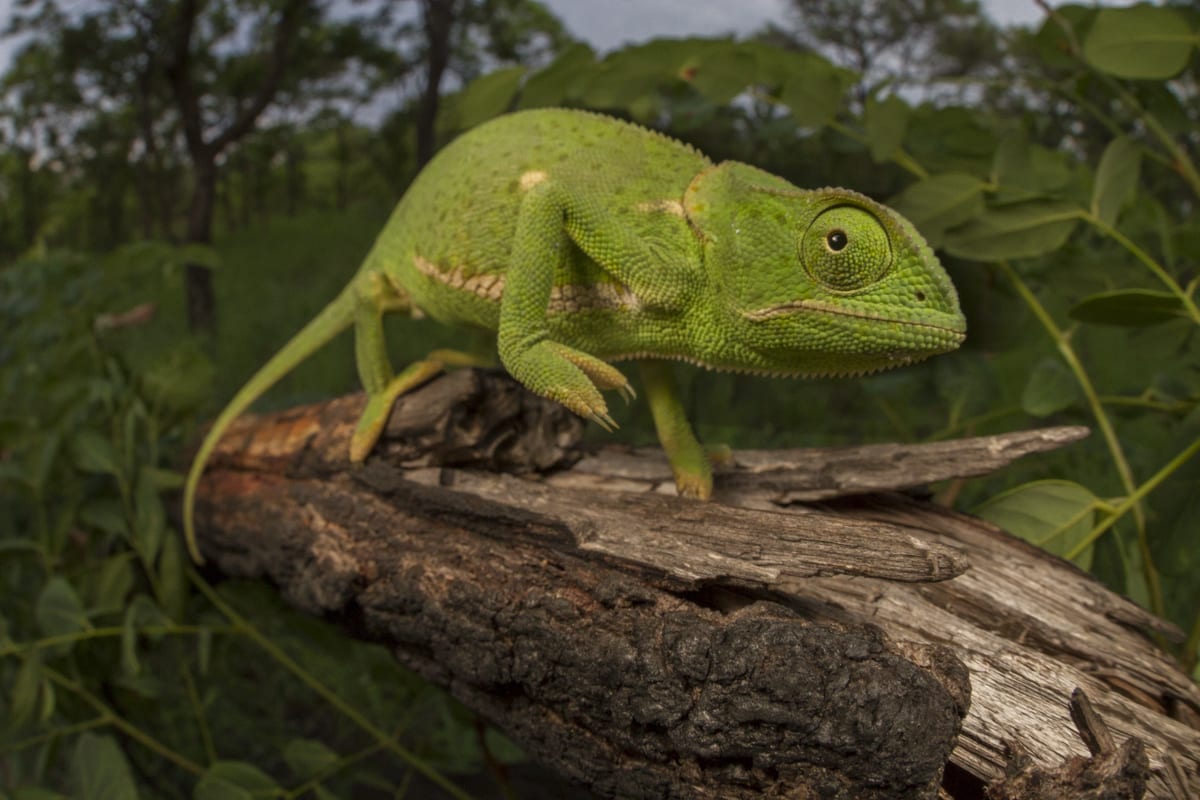
Science generates the information that is required for the long-term conservation of the greater Gorongosa-Marromeu landscape and the sustainable development of its Buffer Zone. Science per se does not immediately address threats to and changes in the landscape. However, without the right information and evaluation, the interventions by the other Departments in the Gorongosa Project may not be properly defined or properly targeted and their outcome and effectiveness will be unknown. Assumption-driven research and monitoring will enable the GP to adjust its actions.
Prior to the commencement of GP’s science activities in 2006, little was known about Gorongosa’s biodiversity with the exception of the larger charismatic wildlife and birds. What was known about its ecological functioning was based on an excellent landscape ecological study from the 1970’s. Since then however much has changed in this dynamic environment. Land use changes in the Buffer Zone have been profound. New scientific tools, techniques and theories have become available.
This is implemented through seven major science programs that are inter-linked and mutually supporting. The Programs are realized through GP’s own staff in partnership with a wide range of external researchers and institutions.
Thus far, the E.O. Wilson Biodiversity Laboratory in Chitengo has been the physical facility and central hub through which the different programs of Science are being delivered. Considering the expanding activities of GP across the broader landscape from Mount Gorongosa to the mangroves on the coast of the Indian Ocean, it will be important to establish additional satellite science facilities.
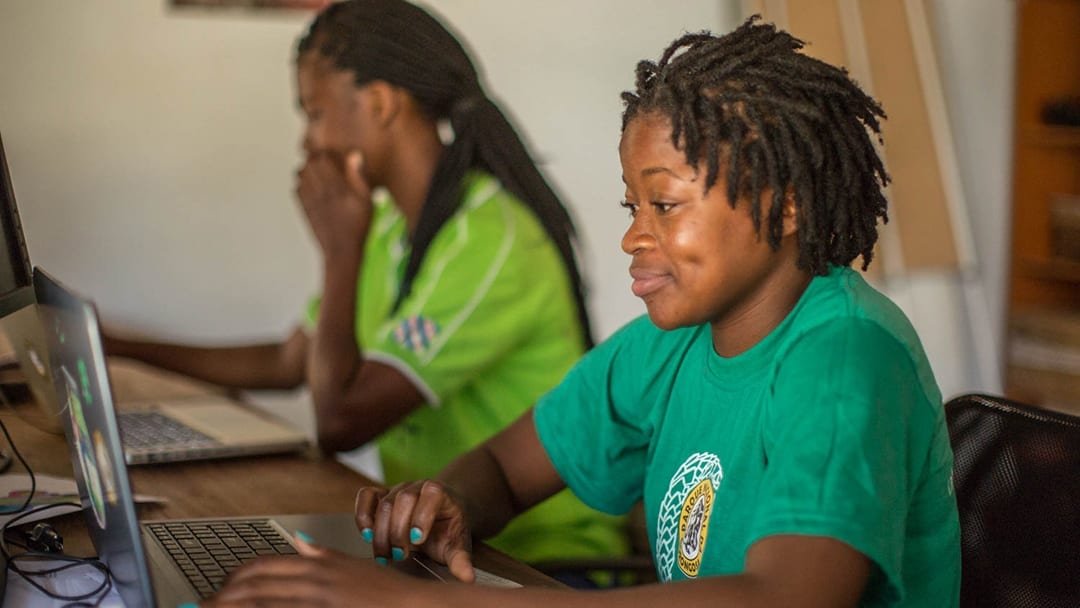
Reports
Browse the scientific reports below that have come from work done in Gorongosa National Park.
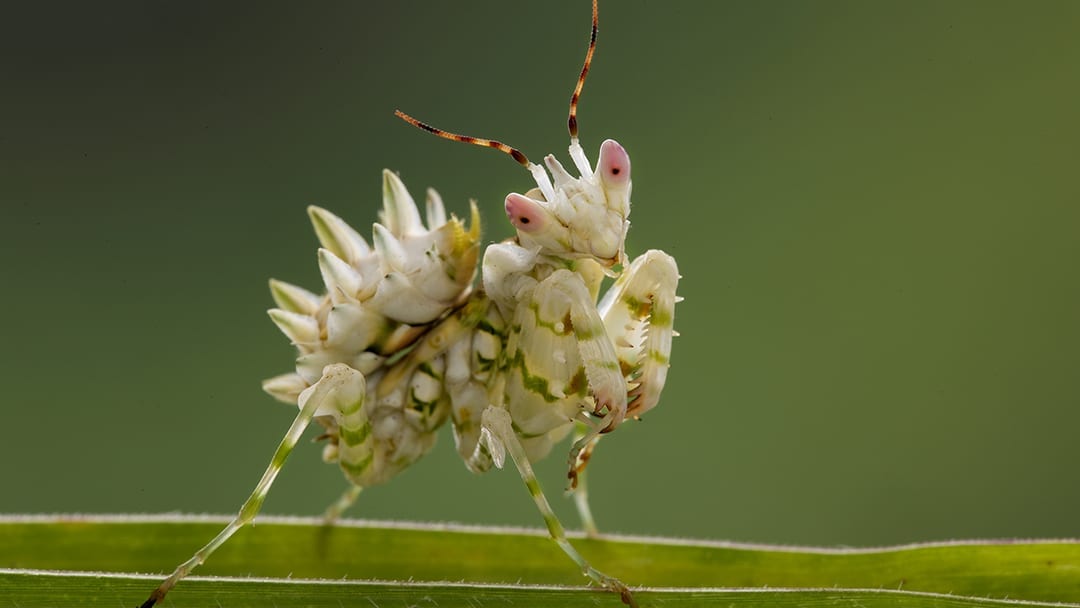
Biodiversity Exploration
BioEx is creating a detailed picture of life in Gorongosa.
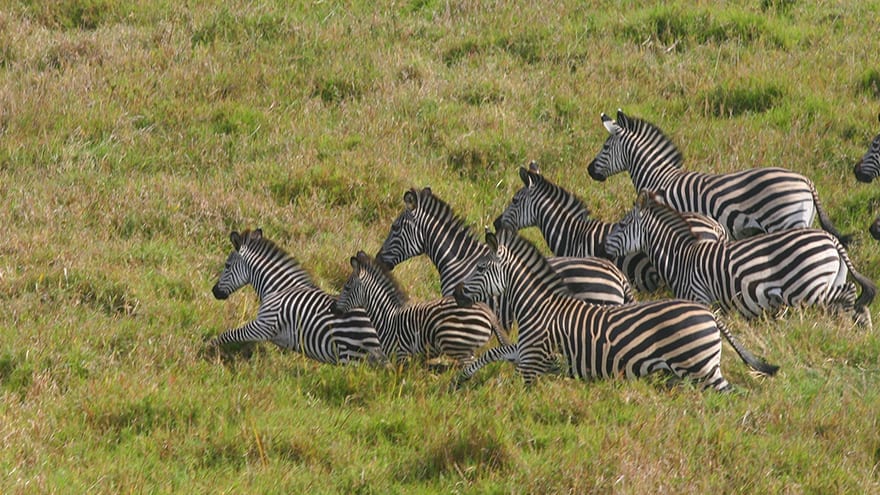
Ecological Monitoring
Long-term biological monitoring is essential to document properties of species and ecosystems over time.
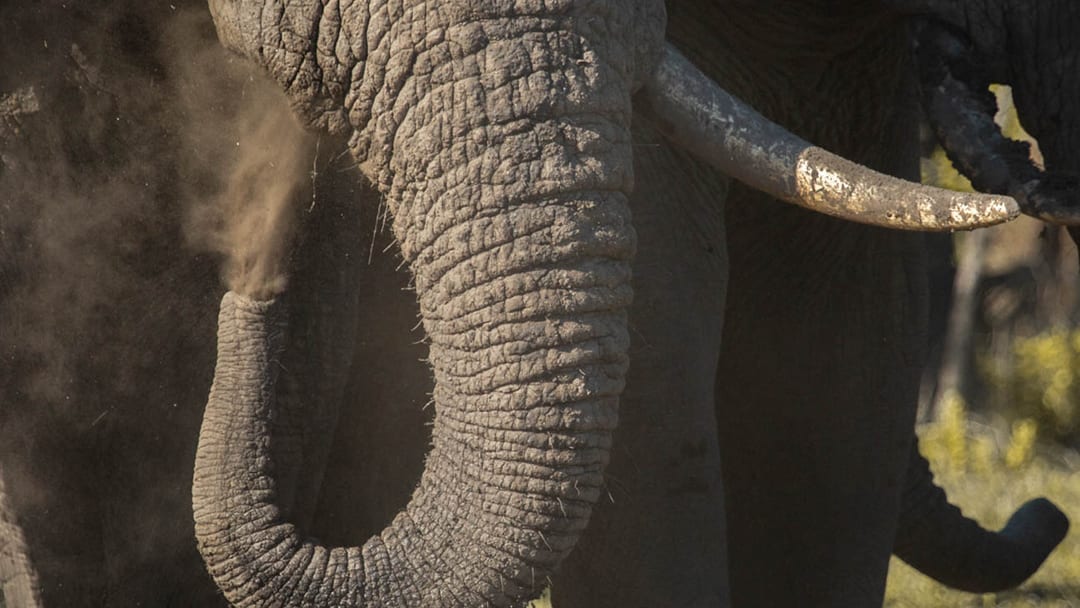
Elephant Ecology
The Elephant Ecology Project undertakes research and monitoring of the elephant population in the Greater Gorongosa Region.
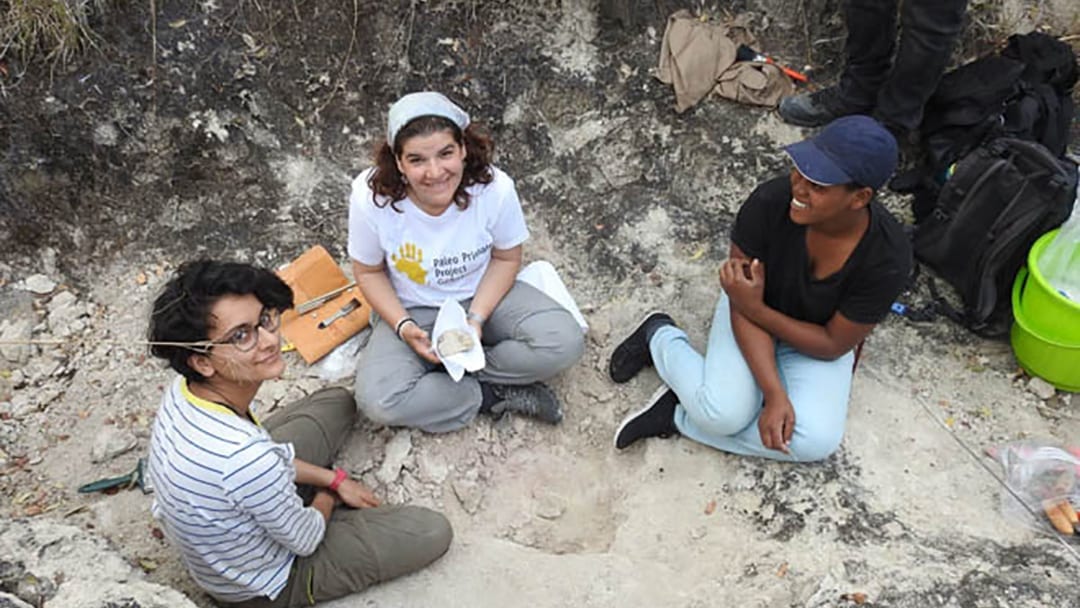
Paleo-Primatology Project
Since 2016, our team has been conducting surveys of sedimentary rocks exposed within GNP.
BioEducation
The BioEducation Program was designed to improve conservation science education in Mozambique.
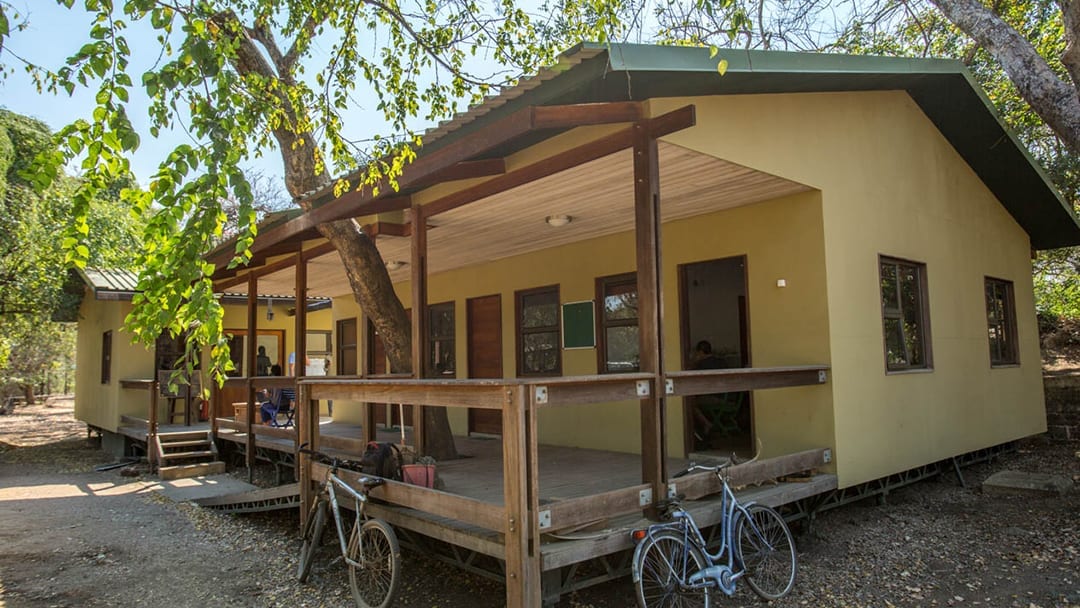
Spatial Data Management
We perform data engineering and data analysis, followed by visualization and map production.
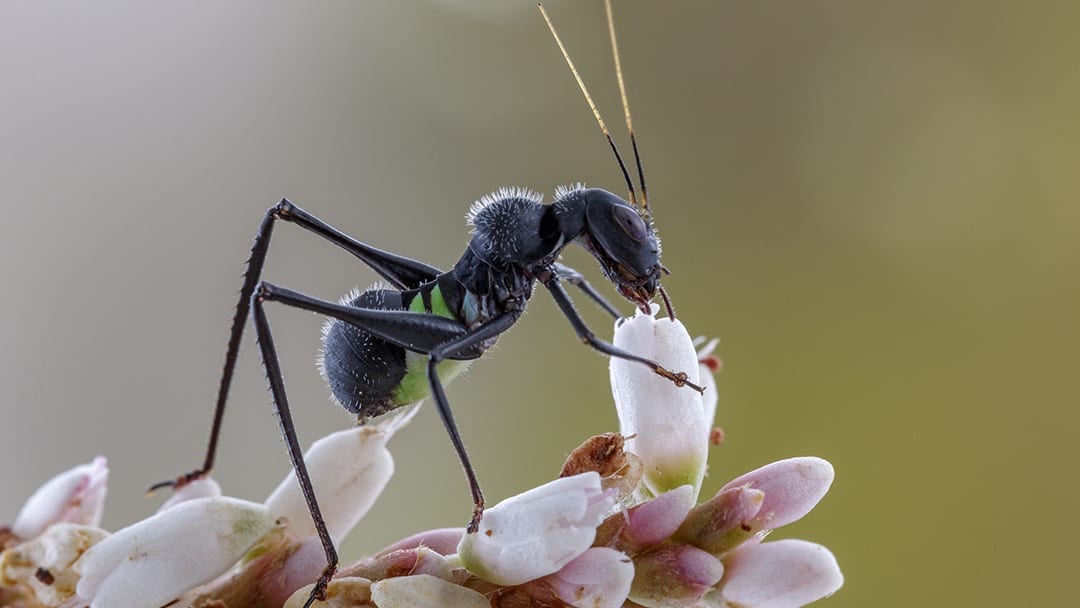
Map of Life Project
Map of Life Project is creating a detailed picture of life in Gorongosa.
Our Team
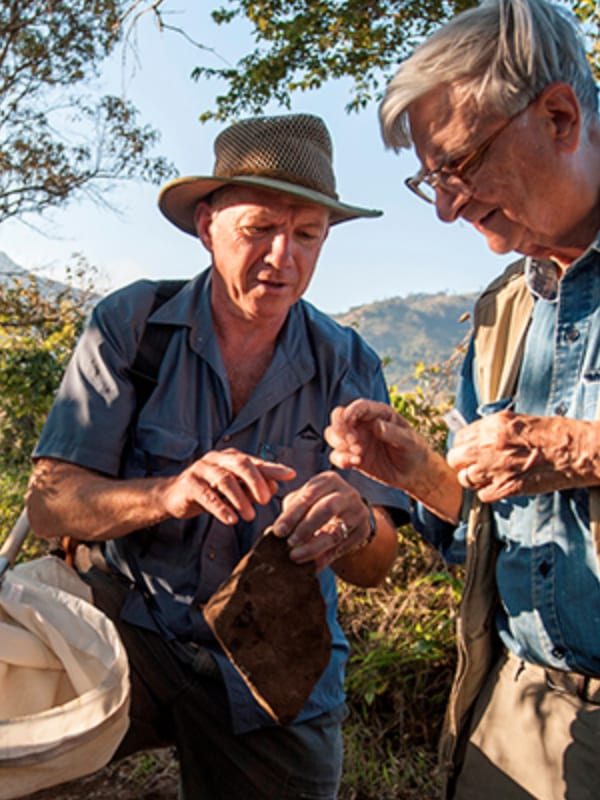
Marc Stalmans
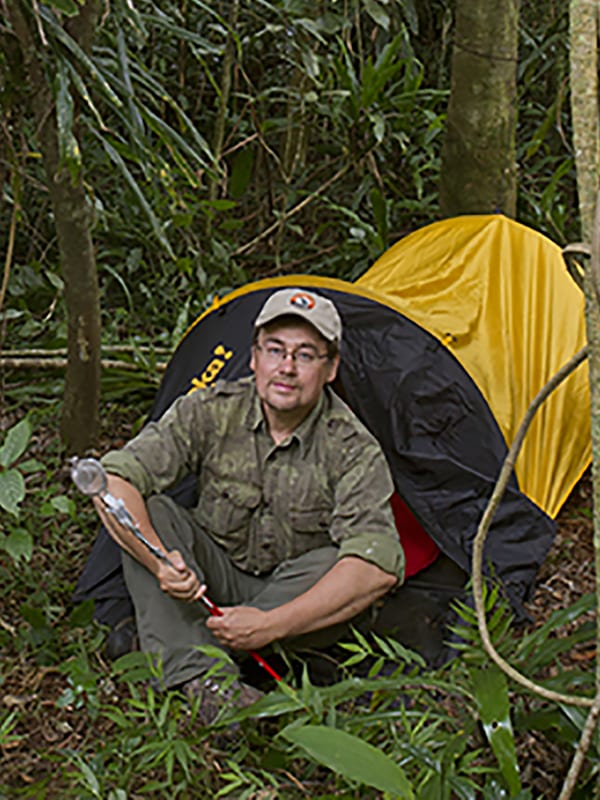
piotr naskrecki
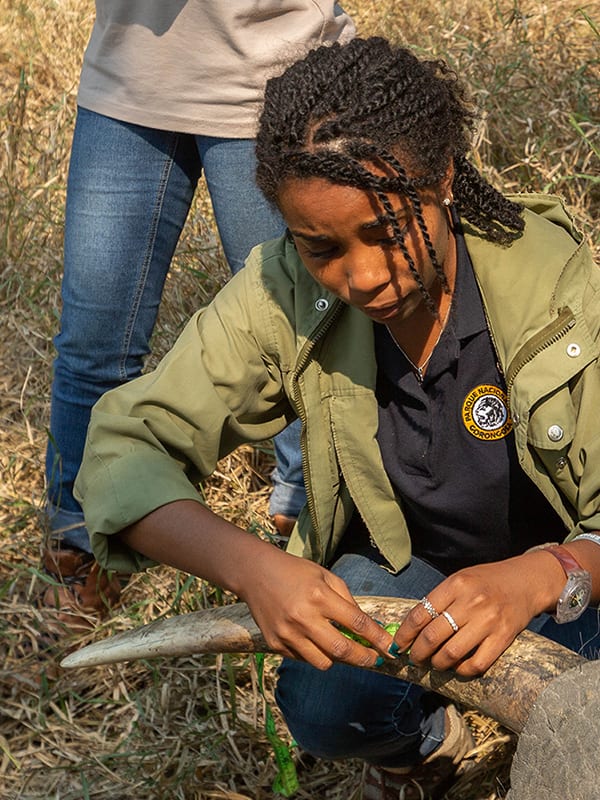
Dominique Gonçalves
Citizen Science at Gorongosa
If you can’t be here in person, you can still participate in the conservation research being done in the Park by joining our online citizen scientist community at WildCam Gorongosa. Here, you can help identify animals in photos taken by the motion-activated trail cameras. The data generated is then returned to scientists in Gorongosa National Park (GNP) to help with their research. With the high volume of photos, citizen scientists are an essential component of the WildCam project. Participants don’t need any special training; the website is clearly designed, and it’s easy and fascinating to contribute to important research.
Gorongosa is truly at the cutting edge of scientific research and we invite you to visit, join our scientists in the field, and learn about their thrilling, ground-breaking work.
Information for Prospective Researchers
Information for Prospective Researchers
We encourage research in a variety of disciplines. Due to its native biodiversity, its diverse habitat types, the dynamics of its recovering wildlife populations, and its complex human history, Gorongosa National Park offers unique opportunities for biological, ecological, hydrological, and social research.
Here you can find a flowchart that describes the process of applying to do research at the Park, and the correct people to get in touch with;
Please read our Gorongosa Research Background and Opportunities for more detailed information, and for researchers that are applying, the first step is to submit a short proposal that contains the Title of the Project, Name(s) of the Researcher(s), Institutional Affiliation, Objectives, Methodology, Time Frame and Expected Outcomes. This proposal should be submitted to the Director of Scientific Services, Dr. Marc Stalmans: stalmans@gorongosa.net
Once your research proposal is accepted, please download and fill in the following documents and email to Research Manager,
Miguel Lajas – miguellajas@gorongosa.net
Also, please read the following Welcome Documents to help you prepare for your time at the Park.
– Researcher Welcome and useful information for travelling to Gorongosa National Park
While encouraging all fields of research, the following are of particular management and/or academic interest:
- The balance of large herbivores has changed from pre-war conditions with species such as waterbuck and warthog having a larger relative (and possibly absolute) contribution to overall biomass. Will other species be able to increase back to historical levels or will current numbers and ratio of waterbuck inhibit such change?
- Is the grazing succession being gradually re-established with the increase in buffalo numbers? Is this a patch phenomenon (grazing lawns) and at what scale is it happening? Can the spatial restoration of the grazing succession be modeled across the Park?
- How has the decline in herbivore numbers impacted primary productivity and ensuing wildfires? Are timing, extent, intensity and spatial pattern of wildfires different from those under higher herbivore numbers? Has this impacted negatively or positively on woody regeneration and growth?
- Elephant numbers were drastically reduced from the original 2,500 animals. Currently the elephant population appears to be recovering well with an estimated 500 elephants in the Park. Many other Parks where there is currently debate about the ‘elephant problem’, did not have monitoring systems in place to assess their true impact on biodiversity. What monitoring systems can be set up in Gorongosa to track vegetation and biodiversity changes as the elephant population increases?
- What are the impacts of hippo from a grazing, fertilizing and mechanical perspective (e.g. channels in the aquatic systems and paths on land)? How has this changed since the decline in hippo numbers? Should additional hippo be introduced?
- What was the ‘historical’ extent of rainforest on Mount Gorongosa? Can soil patterns, rain shadow and fire shadow extent and relict forest trees in conjunction with habitat information be used to model past forest cover?
- What is / could be the role of riparian corridors between Mount Gorongosa and Gorongosa Park? Should such corridors be reestablished, and in what manner, to mitigate the effects of climate change?
- Can fine-scale topographical information (LIDAR) be used to model floodplain dynamics at both a fine and intermediate scale to better understand desiccation of portions of the floodplain through accelerated erosion, tree invasion, etc.?
- How are changing land use patterns outside the Park, and the loss of grazing areas that were historically available to wildlife, impacting upon seasonal distribution patterns, resulting in forage bottlenecks and overall limiting wildlife numbers in the Park? What connections / dispersal areas should be restored and/or maintained.
- How are changing patterns of land use and increased water abstraction outside of the park affecting the flooding regime of the Gorongosa valley?
- The alien invasive plant, Mimosa pigra, has long been present in the Park, but seems to have been kept in check by the high number of herbivores. What is the impact of changed numbers and ratios of herbivore species on Mimosa pigra? Will recovering wildlife populations control Mimosa pigra or has the species become more widespread and too well established to be controlled even by high number of browsing animals?
- Understanding and modeling fodder flows (both in terms of quantity and nutritional quality for herbivores) in relation to rainfall, pulse-flooding, fire and herbivory.
For anyone interested in undertaking research in Gorongosa National Park, please send an e-mail to jason.denlinger@gorongosa.net. Please provide us with a short outline of who you are, what your objectives are, and what you would like to do in the park. We will talk to you about your project idea and assist you with developing a formal project proposal in order for you to secure a research permit.
Applicants should be mindful that research in Gorongosa that deals with animal and plant specimens and/or diseases might require special treatment (legally and ethically). Researchers should allow time for us to work with you on your proposal ideas and may be asked to schedule their research according to other work being conducted in the park. This could mean that a researcher is only allowed to conduct their research several months after they apply for a research permit. Please make special note of this if your research is time-sensitive or seasonal.
The Edward O. Wilson Biodiversity Laboratory
The Edward O. Wilson Laboratory is a research facility at Gorongosa National Park, an important new hub of scientific and educational activity in Mozambique. It has been created to explore, document, and protect biodiversity of Gorongosa National Park as well as to offer research and training opportunities in biodiversity-related fields for students and conservation leaders in Mozambique. The laboratory is named in honor of one of the world’s greatest champions of biodiversity conservation, Dr. Edward O. Wilson, who for years has been the leading synergistic force that allowed many scientists and conservationists to come together and focus their energy on the restoration projects in Gorongosa.
Goals of the E.O. Wilson Laboratory
Biological Exploration and Monitoring
The E.O. Wilson Laboratory conducts comprehensive surveys of biological diversity of the park in all its ecological zones, habitat types, and most important biological communities. These surveys focus on those groups of multicellular organisms that are of particular importance to the function of the greater Gorongosa ecosystem as well as those that carry the greatest promise of discovery of endemic and new to science species. The results of the surveys and exploratory long-term research projects will create a radical, detailed and dynamic picture of life in Gorongosa, and help guide the national park’s restoration efforts.
- The Synoptic Biodiversity Collection – The Laboratory is home to a permanent synoptic collection of Gorongosa’s flora and fauna, the first facility of its kind in any protected area in Africa. The Laboratory will work closely with Mozambique’s national institutions towards a comprehensive inventory of biological richness of the country. The Collection will soon include a molecular facility for DNA storage and extraction, intended primarily for processing of genetic material that is prone to rapid deterioration (e.g., scat and other forensic material). The main collection area is climate-controlled, and equipped with modern storage for botanical and zoological specimens; the collection has a comprehensive data management and specimen tracking system, including physical barcoding of specimens.
- Education of Mozambican conservationists and experts – The Laboratory aims to offer a wide range of educational opportunities to Mozambican students and conservation leaders. These include workshops on biodiversity- and conservation-related topics, participation in day-to-day operations of the Lab and biological surveys organized by the Lab, and being part of a variety of long-term research projects in the Gorongosa National Park.
- Media and Outreach – A part of the Laboratory will be dedicated to media production and distribution to serve our mission of sharing biodiversity knowledge with scientists, students, and the public. The Laboratory will establish links with institutions in the U.S. and elsewhere to allow us to engage students and the public in our research. Through media partnerships with museums and 3rd level institutions the Laboratory will soon bring research scientists and their work into the public eye through a progressive communication strategy.
Conducting research projects at Gorongosa
Please visit the Prospective Researchers section of this website to find information about the application process for research projects to be conducted at Gorongosa National Park.
The E.O. Wilson Laboratory currently offers the following facilities for students and researchers working on the flora and fauna of the park: (1) laboratory space with benches, including a bench with built-in anti-vibration mechanism for high magnification microscopic work; (2) stereo (dissecting) microscopes; (3) a deep freezer (-40°C); (4) a lab-grade refrigerator; (5) desktop computers and a Wi-Fi network. Next year we plan to add a DNA extraction and PCR facility.
There are several accommodation options for researchers and students. Long-term researchers will be able to use the Laboratory’s own cabins (double and single occupancy). Currently the Lab is able to accommodate up to 12 persons, but check the availability of the units well in advance. Montebelo, the main tourism operator in Gorongosa, offers accommodation options that range from self-catered camping to single occupancy air-conditions cabins to luxurious family bungalows. Visit the Where to Stay section of this website to learn more.
Conservation Fees
Conservation Fees
All visitors, whether tourists or researchers, will be required to pay the daily conservation fee of 20 USD for international visitors. However this fee is capped to a maximum of 15 days for a calendar year like a season pass. Therefore the maximum would be for any calendar year:
- Mozambique National MZN 1,500 meticais
- SADC 150 USD
- International 300 USD
Arriving and travelling in Gorongosa
Arriving and Traveling in Gorongosa
It is important to obtain the correct type of visa for the amount of time you will be spending in Mozambique. Multiple entry visas usually require you to leave the country within 30 days to get your passport stamped and it is best to avoid having to do so where possible. If staying for longer than 30 days, it may be possible to request a 90-day visa in advance but do check with the Mozambican consulate in your home country to obtain the correct visa.
If you will need logistical assistance to renew or obtain a new visa, please inform us when your visa expires upon arrival.
We can arrange transportation for you from the airport in Beira to Gorongosa. Please communicate your travel information upon making your reservation, and should your flight be delayed, please make an effort to email Anne Marchington as soon as possible (annem@gorongosa.net). The cost of a one-way transfer between Beira and Chitengo is between $80 and $120, depending on either availability of vehicles or aircraft on the day of your transfer.
As many of our transfers are done by small planes, for the sake of yours and your fellow passengers safety, the allowable luggage weight is strictly limited to 20 kg.
Please let us know in advance if you will need special assistance with extra luggage as this can be transferred by road.
Coordination on your way out is very important as well if you have brought large amounts of luggage since there is not time to make alternate arrangements.
Many researchers find it necessary to rent a vehicle in order to conduct their field work in Gorongosa. – SixT Rental, at the Beira airport, works with us to offer a discount to our researchers. We can assist with obtaining a rental, but you’ll need to sign a form showing acceptance of the vehicle. To obtain a discount on a rental vehicle, contact Vitor dos Santos (vitors@gorongosa.net).
Fuel can be purchased in Chitengo by providing your vehicle registration and signing the appropriate forms each time you fill up.
In order to facilitate clearing any research equipment you wish to clear through customs, we also advise that you send a list of items to Vitor dos Santos, at least 2 weeks prior to traveling.
Living in Chitengo
Living in Chitengo
You can purchase meals at the Montebelo Restaurant during the tourist season (March through mid-December) where meals can range between 5 to 20 USD depending on what you order. There is also a basic common kitchen where you may cook. Please remember, the kitchen is shared by many and should be maintained and cleaned by everyone using the facility. Please also take note that baboons frequent the area so it is important to lock food in the kitchen and maintain cleanliness in all areas including your living space. It is very important that everyone please wash their dishes directly after use as many people are sharing common spaces. Please also label and date your food and throw food away that has gone bad. The nearest place to buy groceries is in Vila Gorongosa, which is 60 kilometers from Chitengo. If you need a shopping trip, please ask around to organize an outing with the next vehicle leaving the station. Beira (4 h away) and Chimoio (3 h away) are the nearest cities where one can purchase more specialized groceries.
If staying in a science cabin, it will be cleaned once a day during the work-week; Laundry should be left in the laundry bag or basket provided for washing.
There is unsecured wireless networks available at the camp. Movitel is the most reliable cell phone operator in the Gorongosa region and works best in the field. At least one person in your group should obtain a SIM card in case of emergency. SIM cards are 20 MTZ in Beira or Vila Gorongosa, but do not come with credit so be sure to purchase 200-300 meticais worth of credit to start with.
The free Wi-fi in Chitengo is used by many people so many visitors and staff choose to obtain their own internet access by creating a hotspot on their cell phone with a SIM card or modem from Vodacom.
It is easy to hear people between offices, so please be respectful in your conversations; particularly if you are talking on Skype or the phone, it may be best to find a place away from the offices so as to not disturb your neighbors.
Millenium Bank in Vila Gorongosa has ATMs where international debit cards work, and US Dollars, Rand, and Euros can be exchanged in Beira and Chimoio. ATM Machines in the airport are the easiest way to draw Mozambican currency (meticais).
Research at the EO Wilson Science Center
Research at the EO Wilson Science Center
We want to facilitate your research to the greatest extent possible, so please communicate your needs to us well in advance. All researchers are required to go into the field accompanied by a ranger, if they will be exiting their vehicles.
Rangers should be reserved at least one day ahead of time, but it is better to send a schedule ahead of time if you know your needs prior to arrival; coordinate with Jason Denlinger (jason.denlinger@gorongosa.net). Ranger fees are now 5 USD whether half-day, full-day or a few hours and will be assessed for last minute cancellations as well.
Office space is at a premium and should also be reserved through Jason before your arrival at Gorongosa. Each cabin also comes with a desk and internet access reaches the cabins. A -40 °C degree freezer and a lab grade refrigerator are available. Please let Jason know what you need to store in the fridge or freezer, so space can be optimized. We also have a herbarium and entomological collection for consultation, and some field guides and local reports are available for on-sight use. Please consult the gorongosa.net website for background information about the park.
If you need to store supplies at the Science Center, please pack things in a labeled box and leave a detailed list of the contents with Jason. If your supplies are left for over a year without an update from you, they will be discarded in the interest of space. Please do your best to return home with as many batteries as you can that you may have brought with you in order to be environmentally responsible. It is basically impossible to dispose of them properly here.
Our Biodiversity Database
Our Biodiversity Database:
One of the goals of research at Gorongosa is to exhaustively catalogue all species present. We have an interactive database that is constantly being updated. You can access it at the Science Center to learn about species occurrences, and if you are willing to share data on your focal taxa or any interesting observations you make while at Gorongosa, your contributions would be greatly appreciated. Please contact Piotr Naskrecki for further information and to contribute data (pnaskrec@oeb.harvard.edu).
Health and Safety
Health and safety
You are required to purchase international medical/evacuation insurance for the duration of your stay Gorongosa. In the event of minor illness or injury, Gorongosa has an onsite health clinic staffed by two nurses. There is also an ambulance on site for transport to Beira or Chimoio in the case of an emergency. For very serious situations, you will likely have to travel to Pretoria (South Africa) for care. Please call Jason Denlinger if medical assistance is required (826598421). If he cannot be reached, please call Mike Marchington (823343084). When in the field, you should have a Movitel cell phone and be accompanied by a ranger with a radio, at all times.
What clothing should I bring?
What to Pack?
Clothing :
Sun hat/bush hat
Headscarf/bandana – particularly before the rains, from November to April
Golf-shirts and/or T-shirts – preferably with a sleeve to protect your shoulders from the sun
Long-sleeved cotton shirts – for the evenings as protection against biting insects
Shorts and/or skirts – really short skirts are not practical for getting in and out of vehicles
Long trousers/slacks
Track suit – for cold mornings
Pajamas – lightweight for summer
Underwear
Good closed walking shoes
Socks
Sandals – preferably low heeled or flat
Swimming costume
Lightweight jersey or fleece
Rain gear or jacket for summer months
Lightweight jacket for early mornings in winter
Scarf, gloves and beanies for early mornings in winter
What basic equipment should I bring?
Equipment/Other:
Good quality sunglasses, UV protected, preferably polarized. Tinted fashion glasses are not good in strong light.
If you wear contact lenses, we recommend that you bring along a pair of glasses in case you get irritation from the dust
Personal toiletries
Moisturizing cream and suntan lotion – SPF 30 or higher recommended
Insect repellent for body application, e.g. Tabard, Rid, Jungle Juice, etc.
Tissues/Wet Wipes
Basic medical kit (aspirins, plasters, Imodium, antiseptic cream and antihistamine cream, etc.)
Malaria tablets (if applicable)
Antihistamine tablets if you suffer from any allergies
Anti-nausea tablets if you suffer from motion sickness
Torch
Camera equipment including spare batteries, chargers, film, flash cards, memory sticks, etc.
Waterproof/dustproof bag or cover for your camera
Binoculars for viewing both wildlife and birds
Visas, tickets, passports, money, credit cards, insurance details, etc.
NOTE 1: Bright colours and white are not advisable whilst in the bush. Camouflage clothing is not recommended for travel in African countries.
NOTE 2: There may be a luggage restriction on your travels – please ensure that you familiarize yourself with the Airline luggage restriction details before traveling to Mozambique.
NOTE 3: A limited number of reference books are available in the steadily growing EO Wilson Laboratory Library for use during your stay.
Information for Prospective Researchers
Prospective Researchers
We encourage research in a variety of disciplines. Due to its native biodiversity, its diverse habitat types, the dynamics of its recovering wildlife populations, and its complex human history, Gorongosa National Park offers unique opportunities for biological, ecological, hydrological, and social research.
Here you can find a flowchart that describes the process of applying to do research at the Park, and the correct people to get in touch with;
Please read our Gorongosa Research Backgound and Opportunities 2018 for more detailed information, and for researchers that are applying, the first step is to submit a short proposal that contains the Title of the Project, Name(s) of the Researcher(s), Institutional Affiliation, Objectives, Methodology, Time Frame and Expected Outcomes. This proposal should be submitted to the Director of Scientific Services, Dr. Marc Stalmans: stalmans@gorongosa.net
– Research Guidelines and Emergency Contact Information
Also, please read the following Welcome Documents to help you prepare for your time at the Park.
– Researcher Welcome and useful information for travelling to Gorongosa National Park
While encouraging all fields of research, the following are of particular management and/or academic interest:
- The balance of large herbivores has changed from pre-war conditions with species such as waterbuck and warthog having a larger relative (and possibly absolute) contribution to overall biomass. Will other species be able to increase back to historical levels or will current numbers and ratio of waterbuck inhibit such change?
- Is the grazing succession being gradually re-established with the increase in buffalo numbers? Is this a patch phenomenon (grazing lawns) and at what scale is it happening? Can the spatial restoration of the grazing succession be modeled across the Park?
- How has the decline in herbivore numbers impacted primary productivity and ensuing wildfires? Are timing, extent, intensity and spatial pattern of wildfires different from those under higher herbivore numbers? Has this impacted negatively or positively on woody regeneration and growth?
- Elephant numbers were drastically reduced from the original 2,500 animals. Currently the elephant population appears to be recovering well with an estimated 500 elephants in the Park. Many other Parks where there is currently debate about the ‘elephant problem’, did not have monitoring systems in place to assess their true impact on biodiversity. What monitoring systems can be set up in Gorongosa to track vegetation and biodiversity changes as the elephant population increases?
- What are the impacts of hippo from a grazing, fertilizing and mechanical perspective (e.g. channels in the aquatic systems and paths on land)? How has this changed since the decline in hippo numbers? Should additional hippo be introduced?
- What was the ‘historical’ extent of rainforest on Mount Gorongosa? Can soil patterns, rain shadow and fire shadow extent and relict forest trees in conjunction with habitat information be used to model past forest cover?
- What is / could be the role of riparian corridors between Mount Gorongosa and Gorongosa Park? Should such corridors be reestablished, and in what manner, to mitigate the effects of climate change?
- Can fine-scale topographical information (LIDAR) be used to model floodplain dynamics at both a fine and intermediate scale to better understand desiccation of portions of the floodplain through accelerated erosion, tree invasion, etc.?
- How are changing land use patterns outside the Park, and the loss of grazing areas that were historically available to wildlife, impacting upon seasonal distribution patterns, resulting in forage bottlenecks and overall limiting wildlife numbers in the Park? What connections / dispersal areas should be restored and/or maintained.
- How are changing patterns of land use and increased water abstraction outside of the park affecting the flooding regime of the Gorongosa valley?
- The alien invasive plant, Mimosa pigra, has long been present in the Park, but seems to have been kept in check by the high number of herbivores. What is the impact of changed numbers and ratios of herbivore species on Mimosa pigra? Will recovering wildlife populations control Mimosa pigra or has the species become more widespread and too well established to be controlled even by high number of browsing animals?
- Understanding and modeling fodder flows (both in terms of quantity and nutritional quality for herbivores) in relation to rainfall, pulse-flooding, fire and herbivory.
For anyone interested in undertaking research in Gorongosa National Park, please send an e-mail to science (at) gorongosa.net. Please provide us with a short outline of who you are, what your objectives are, and what you would like to do in the park. We will talk to you about your project idea and assist you with developing a formal project proposal in order for you to secure a research permit.
Applicants should be mindful that research in Gorongosa that deals with animal and plant specimens and/or diseases might require special treatment (legally and ethically). Researchers should allow time for us to work with you on your proposal ideas and may be asked to schedule their research according to other work being conducted in the park. This could mean that a researcher is only allowed to conduct their research several months after they apply for a research permit. Please make special note of this if your research is time-sensitive or seasonal.
The Edward O. Wilson Biodiversity Laboratory
The Edward O. Wilson Laboratory is a research facility at Gorongosa National Park, an important new hub of scientific and educational activity in Mozambique. It has been created to explore, document, and protect biodiversity of Gorongosa National Park as well as to offer research and training opportunities in biodiversity-related fields for students and conservation leaders in Mozambique. The laboratory is named in honor of one of the world’s greatest champions of biodiversity conservation, Dr. Edward O. Wilson, who for years has been the leading synergistic force that allowed many scientists and conservationists to come together and focus their energy on the restoration projects in Gorongosa.
Goals of the E.O. Wilson Laboratory
Biological Exploration and Monitoring
The E.O. Wilson Laboratory conducts comprehensive surveys of biological diversity of the park in all its ecological zones, habitat types, and most important biological communities. These surveys focus on those groups of multicellular organisms that are of particular importance to the function of the greater Gorongosa ecosystem as well as those that carry the greatest promise of discovery of endemic and new to science species. The results of the surveys and exploratory long-term research projects will create a radical, detailed and dynamic picture of life in Gorongosa, and help guide the national park’s restoration efforts.
- The Synoptic Biodiversity CollectionThe Laboratory is home to a permanent synoptic collection of Gorongosa’s flora and fauna, the first facility of its kind in any protected area in Africa. The Laboratory will work closely with Mozambique’s national institutions towards a comprehensive inventory of biological richness of the country. The Collection will soon include a molecular facility for DNA storage and extraction, intended primarily for processing of genetic material that is prone to rapid deterioration (e.g., scat and other forensic material). The main collection area is climate-controlled, and equipped with modern storage for botanical and zoological specimens; the collection has a comprehensive data management and specimen tracking system, including physical barcoding of specimens.
- Education of Mozambican conservationists and expertsThe Laboratory aims to offer a wide range of educational opportunities to Mozambican students and conservation leaders. These include workshops on biodiversity- and conservation-related topics, participation in day-to-day operations of the Lab and biological surveys organized by the Lab, and being part of a variety of long-term research projects in the Gorongosa National Park.
- Media and OutreachA part of the Laboratory will be dedicated to media production and distribution to serve our mission of sharing biodiversity knowledge with scientists, students, and the public. The Laboratory will establish links with institutions in the U.S. and elsewhere to allow us to engage students and the public in our research. Through media partnerships with museums and 3rd level institutions the Laboratory will soon bring research scientists and their work into the public eye through a progressive communication strategy.
Conducting research projects at Gorongosa
Please visit the Prospective Researchers section of this website to find information about the application process for research projects to be conducted at Gorongosa National Park.
The E.O. Wilson Laboratory currently offers the following facilities for students and researchers working on the flora and fauna of the park: (1) laboratory space with benches, including a bench with built-in anti-vibration mechanism for high magnification microscopic work; (2) stereo (dissecting) microscopes; (3) a deep freezer (-40°C); (4) a lab-grade refrigerator; (5) desktop computers and a Wi-Fi network. Next year we plan to add a DNA extraction and PCR facility.
There are several accommodation options for researchers and students. Long-term researchers will be able to use the Laboratory’s own cabins (double and single occupancy). Currently the Lab is able to accommodate up to 12 persons, but check the availability of the units well in advance. Montebelo, the main tourism operator in Gorongosa, offers accommodation options that range from self-catered camping to single occupancy air-conditions cabins to luxurious family bungalows. Visit the Where to Stay section of this website to learn more.
Conservation Fees
Conservation Fees
All visitors, whether tourists or researchers, will be required to pay the daily conservation fee of 20 USD for international visitors. However this fee is capped to a maximum of 15 days for a calendar year like a season pass. Therefore the maximum would be for any calendar year:
- Mozambique National MZN 1,500 meticais
- SADC 150 USD
- International 300 USD
Arriving and travelling in Gorongosa
Arriving and Traveling in Gorongosa
It is important to obtain the correct type of visa for the amount of time you will be spending in Mozambique. Multiple entry visas usually require you to leave the country within 30 days to get your passport stamped and it is best to avoid having to do so where possible. If staying for longer than 30 days, it may be possible to request a 90-day visa in advance but do check with the Mozambican consulate in your home country to obtain the correct visa.
If you will need logistical assistance to renew or obtain a new visa, please inform us when your visa expires upon arrival.
We can arrange transportation for you from the airport in Beira to Gorongosa. Please communicate your travel information upon making your reservation, and should your flight be delayed, please make an effort to email Anne Marchington as soon as possible (annem@gorongosa.net). The cost of a one-way transfer between Beira and Chitengo is between $80 and $120, depending on either availability of vehicles or aircraft on the day of your transfer.
As many of our transfers are done by small planes, for the sake of yours and your fellow passengers safety, the allowable luggage weight is strictly limited to 20 kg.
Please let us know in advance if you will need special assistance with extra luggage as this can be transferred by road.
Coordination on your way out is very important as well if you have brought large amounts of luggage since there is not time to make alternate arrangements.
Many researchers find it necessary to rent a vehicle in order to conduct their field work in Gorongosa. – SixT Rental, at the Beira airport, works with us to offer a discount to our researchers. We can assist with obtaining a rental, but you’ll need to sign a form showing acceptance of the vehicle. To obtain a discount on a rental vehicle, contact Vitor dos Santos (vitors@gorongosa.net).
Fuel can be purchased in Chitengo by providing your vehicle registration and signing the appropriate forms each time you fill up.
In order to facilitate clearing any research equipment you wish to clear through customs, we also advise that you send a list of items to Vitor dos Santos, at least 2 weeks prior to traveling.
Living in Chitengo
Living in Chitengo
You can purchase meals at the Montebelo Restaurant during the tourist season (March through mid-December) where meals can range between 5 to 20 USD depending on what you order. There is also a basic common kitchen where you may cook. Please remember, the kitchen is shared by many and should be maintained and cleaned by everyone using the facility. Please also take note that baboons frequent the area so it is important to lock food in the kitchen and maintain cleanliness in all areas including your living space. It is very important that everyone please wash their dishes directly after use as many people are sharing common spaces. Please also label and date your food and throw food away that has gone bad. The nearest place to buy groceries is in Vila Gorongosa, which is 60 kilometers from Chitengo. If you need a shopping trip, please ask around to organize an outing with the next vehicle leaving the station. Beira (4 h away) and Chimoio (3 h away) are the nearest cities where one can purchase more specialized groceries.
If staying in a science cabin, it will be cleaned once a day during the work-week; Laundry should be left in the laundry bag or basket provided for washing.
There is unsecured wireless networks available at the camp. Movitel is the most reliable cell phone operator in the Gorongosa region and works best in the field. At least one person in your group should obtain a SIM card in case of emergency. SIM cards are 20 MTZ in Beira or Vila Gorongosa, but do not come with credit so be sure to purchase 200-300 meticais worth of credit to start with.
The free Wi-fi in Chitengo is used by many people so many visitors and staff choose to obtain their own internet access by creating a hotspot on their cell phone with a SIM card or modem from Vodacom.
It is easy to hear people between offices, so please be respectful in your conversations; particularly if you are talking on Skype or the phone, it may be best to find a place away from the offices so as to not disturb your neighbors.
Millenium Bank in Vila Gorongosa has ATMs where international debit cards work, and US Dollars, Rand, and Euros can be exchanged in Beira and Chimoio. ATM Machines in the airport are the easiest way to draw Mozambican currency (meticais).
Research at the EO Wilson Science Center
Research at the EO Wilson Science Center
We want to facilitate your research to the greatest extent possible, so please communicate your needs to us well in advance. All researchers are required to go into the field accompanied by a ranger, if they will be exiting their vehicles.
Rangers should be reserved at least one day ahead of time, but it is better to send a schedule ahead of time if you know your needs prior to arrival; coordinate with Miguel Lajas – miguellajas@gorongosa.net – Ranger fees are now 5 USD whether half-day, full-day or a few hours and will be assessed for last minute cancellations as well.
Office space is at a premium and should also be reserved through Jason before your arrival at Gorongosa. Each cabin also comes with a desk and internet access reaches the cabins. A -40 °C degree freezer and a lab grade refrigerator are available. Please let Jason know what you need to store in the fridge or freezer, so space can be optimized. We also have a herbarium and entomological collection for consultation, and some field guides and local reports are available for on-sight use. Please consult the gorongosa.net website for background information about the park.
If you need to store supplies at the Science Center, please pack things in a labeled box and leave a detailed list of the contents with Jason. If your supplies are left for over a year without an update from you, they will be discarded in the interest of space. Please do your best to return home with as many batteries as you can that you may have brought with you in order to be environmentally responsible. It is basically impossible to dispose of them properly here.
Our Biodiversity Database
Our Biodiversity Database:
One of the goals of research at Gorongosa is to exhaustively catalogue all species present. We have an interactive database that is constantly being updated. You can access it at the Science Center to learn about species occurrences, and if you are willing to share data on your focal taxa or any interesting observations you make while at Gorongosa, your contributions would be greatly appreciated. Please contact Piotr Naskrecki for further information and to contribute data (pnaskrec@oeb.harvard.edu).
Health and Safety
Health and safety
You are required to purchase international medical/evacuation insurance for the duration of your stay Gorongosa. In the event of minor illness or injury, Gorongosa has an onsite health clinic staffed by two nurses. There is also an ambulance on site for transport to Beira or Chimoio in the case of an emergency. For very serious situations, you will likely have to travel to Pretoria (South Africa) for care. Please call Jason Denlinger if medical assistance is required (826598421). If he cannot be reached, please call Mike Marchington (823343084). When in the field, you should have a Movitel cell phone and be accompanied by a ranger with a radio, at all times.
What clothing should I bring?
What to Pack?
Clothing :
Sun hat/bush hat
Headscarf/bandana – particularly before the rains, from November to April
Golf-shirts and/or T-shirts – preferably with a sleeve to protect your shoulders from the sun
Long-sleeved cotton shirts – for the evenings as protection against biting insects
Shorts and/or skirts – really short skirts are not practical for getting in and out of vehicles
Long trousers/slacks
Track suit – for cold mornings
Pajamas – lightweight for summer
Underwear
Good closed walking shoes
Socks
Sandals – preferably low heeled or flat
Swimming costume
Lightweight jersey or fleece
Rain gear or jacket for summer months
Lightweight jacket for early mornings in winter
Scarf, gloves and beanies for early mornings in winter
What basic equipment should I bring?
Equipment/Other:
Good quality sunglasses, UV protected, preferably polarized. Tinted fashion glasses are not good in strong light.
If you wear contact lenses, we recommend that you bring along a pair of glasses in case you get irritation from the dust
Personal toiletries
Moisturizing cream and suntan lotion – SPF 30 or higher recommended
Insect repellent for body application, e.g. Tabard, Rid, Jungle Juice, etc.
Tissues/Wet Wipes
Basic medical kit (aspirins, plasters, Imodium, antiseptic cream and antihistamine cream, etc.)
Malaria tablets (if applicable)
Antihistamine tablets if you suffer from any allergies
Anti-nausea tablets if you suffer from motion sickness
Torch
Camera equipment including spare batteries, chargers, film, flash cards, memory sticks, etc.
Waterproof/dustproof bag or cover for your camera
Binoculars for viewing both wildlife and birds
Visas, tickets, passports, money, credit cards, insurance details, etc.
NOTE 1: Bright colours and white are not advisable whilst in the bush. Camouflage clothing is not recommended for travel in African countries.
NOTE 2: There may be a luggage restriction on your travels – please ensure that you familiarize yourself with the Airline luggage restriction details before traveling to Mozambique.
NOTE 3: A limited number of reference books are available in the steadily growing EO Wilson Laboratory Library for use during your stay.
Masters Program
Information and Resources
The Gorongosa Master’s in Conservation Biology Program was created in 2017 by the Gorongosa Project with a grant from the Howard Hughes Medical Institute (HHMI) in order to prepare Mozambicans to advance conservation in their biodiverse nation.
Master's Program
In this two-year program, students complete academic credit hours through intensive short-term courses taught by an invited faculty of professors from around the world.
.
Student Life
Students in the Gorongosa Master’s in Conservation Biology Program have the rare privilege of calling Gorongosa National Park their home for two years. Learn More
Academics
We aim to become an internationally recognized M. Sc. program dedicated to training competent and capable biologists and conservation leaders in Mozambique. Learn More
Admissions
Admission to the program is very competitive. We are seeking highly motivated Mozambican students with a strong background in conservation, ecology, or a related science. We are currently closed for admissions.
Consortium Partners
The Gorongosa Master’s in Conservation Biology Program is made possible through partnerships with three Mozambican institutions, the Universidade Lúrio, Universidade Zambeze, and the Instituto Superior Politécnico de Manica, in partnership with the Universidade de Lisboa. Our consortium partners help ensure our academic excellence and provide the institutional and administrative support necessary to run a master’s program housed in a national park. The Master’s Program is made possible by the generous funding of the Howard Hughes Medical Institure.
Master’s Program
The Gorongosa Master’s in Conservation Biology Program was created in 2017 by the Gorongosa Project with a grant from the Howard Hughes Medical Institute (HHMI) in order to prepare Mozambicans to advance conservation in their biodiverse nation.
Learn More
Our Mission
Our Mission
Advance an integrated multi-partner approach to conservation and to people-centred development. The Gorongosa Project protects the Park’s biodiversity and ecosystem services and unlocks its economic potential for the community inhabitants of the Gorongosa Buffer Zone, Sofala Province, Mozambique and further afield.
Our Vision
A thriving, biodiversity-rich, Greater Gorongosa conservation landscape, which supports Sofala Province as an engine for resilient and sustainable development enabling nature experiences and wellbeing for its people, enriching all of Mozambique and the world.
A Park for Peace
On 1 August, 2019 a historic ceremony was held in Gorongosa to celebrate the Cessation of Hostilities Accord between the leaders of the Government of Mozambique and the opposition Renamo Party. The accord established Gorongosa National Park (GNP) as a ‘Park for Peace’, delivering human development to the communities that share the greater landscape.
Ethics and Compliance
The Ethics and Compliance e-mail is a reporting mechanism that facilitates reporting of possible illegal, unethical, or improper conduct from staff, suppliers and stakeholders. The e-mail is Ethics@gorongosa.net
